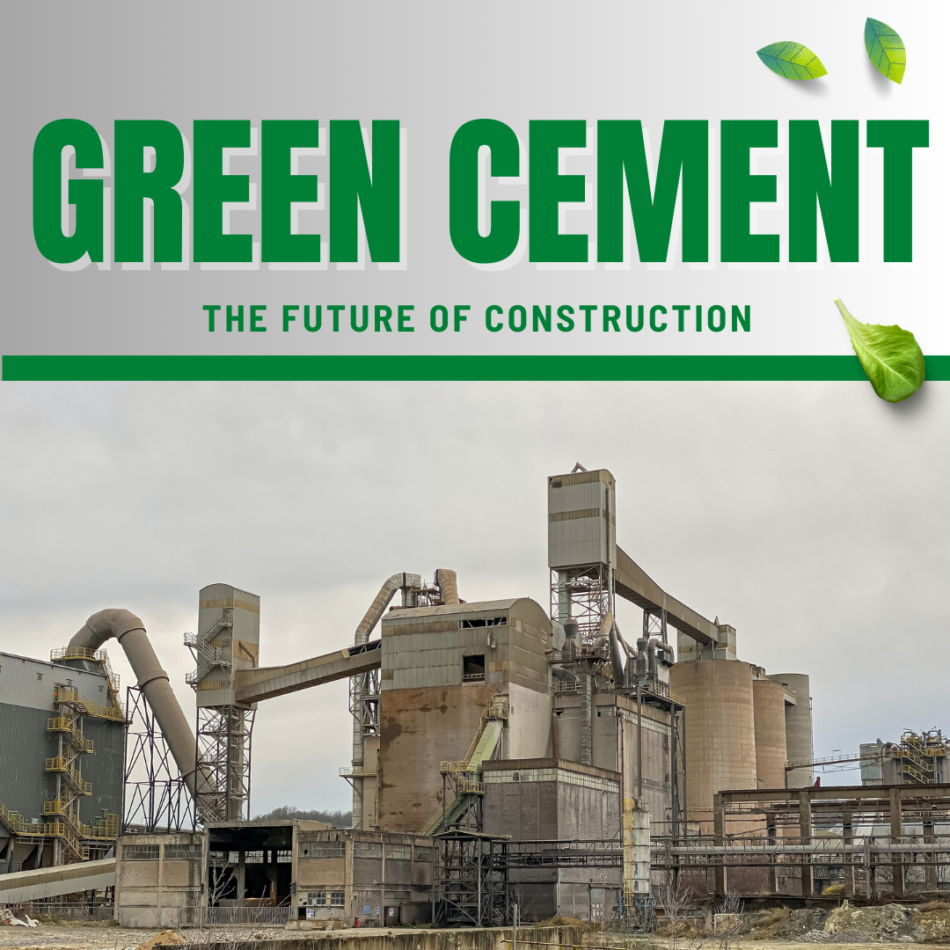The construction industry is undergoing a profound transformation as sustainability takes center stage. Among the critical players in this shift towards a more environmentally responsible future is the cement industry. Traditional cement production has long been associated with significant carbon emissions and environmental degradation. However, the green cement industry is rapidly evolving, offering innovative solutions to reduce its environmental footprint. In this article, we will explore various aspects of the green cement industry and how it is poised to shape the future of construction.
Alternative Raw Materials
One of the most significant advancements in green cement production is the exploration of alternative raw materials. Traditional cement relies heavily on limestone and clay, both of which are finite resources. Green cement manufacturers are increasingly turning to alternative materials like fly ash, slag, and even agricultural waste products such as rice husk ash. These materials not only reduce the environmental impact but also help in conserving valuable natural resources.
Lower Clinker Content
Clinker, a key component in cement production, is responsible for a significant portion of carbon emissions. Green cement aims to reduce the clinker content in cement by utilizing supplementary cementitious materials. This innovation not only decreases emissions but also enhances the durability and performance of concrete structures.
Advanced Kiln Technologies
Modern kiln technologies have made great strides in improving energy efficiency and reducing emissions in cement production. High-efficiency precalciners, fluidized bed systems, and the use of alternative fuels like biomass are some of the approaches being employed to minimize environmental impact.
Carbon Capture and Utilization
Carbon capture and utilization (CCU) technologies have gained attention as a way to mitigate emissions from cement production. These technologies capture carbon dioxide emissions from industrial processes and convert them into valuable products such as building materials, chemicals, or even fuel. Integrating CCU into cement production processes holds immense potential for reducing carbon footprints.
Geopolymers
Geopolymers are a promising alternative to traditional cement. They are formed by the activation of aluminosilicate materials with alkali solutions, eliminating the need for clinker altogether. Geopolymers have excellent mechanical properties, durability, and a significantly lower carbon footprint compared to conventional cement.
Recycled Aggregates
Using recycled aggregates in concrete production is a sustainable practice that reduces the demand for virgin materials. These aggregates can be sourced from construction and demolition waste, reducing landfill waste and energy consumption associated with the extraction and processing of natural aggregates.
Life Cycle Assessment (LCA)
A comprehensive life cycle assessment (LCA) is crucial for evaluating the environmental impact of cement production. LCAs consider all phases of a product's life, from raw material extraction to manufacturing, transportation, and disposal. Green cement manufacturers are increasingly utilizing LCAs to optimize their processes and reduce environmental impacts.
Sustainable or Environmentally Friendly Cement Production
Sustainability certifications like LEED (Leadership in Energy and Environmental Design) have encouraged the adoption of environmentally friendly cement production practices. Manufacturers are striving to attain these certifications, which promote responsible sourcing of materials, energy efficiency, and reduced carbon emissions.
Conclusion
The green cement industry is at the forefront of sustainable construction, offering innovative solutions to reduce the environmental impact of cement production. By embracing alternative raw materials, lowering clinker content, adopting advanced kiln technologies, implementing carbon capture and utilization, exploring geopolymers, utilizing recycled aggregates, conducting life cycle assessments, and pursuing sustainable production practices, the future of construction is becoming more eco-friendly. As the construction sector continues to prioritize sustainability, green cement will play a pivotal role in shaping a greener and more sustainable built environment for generations to come.






